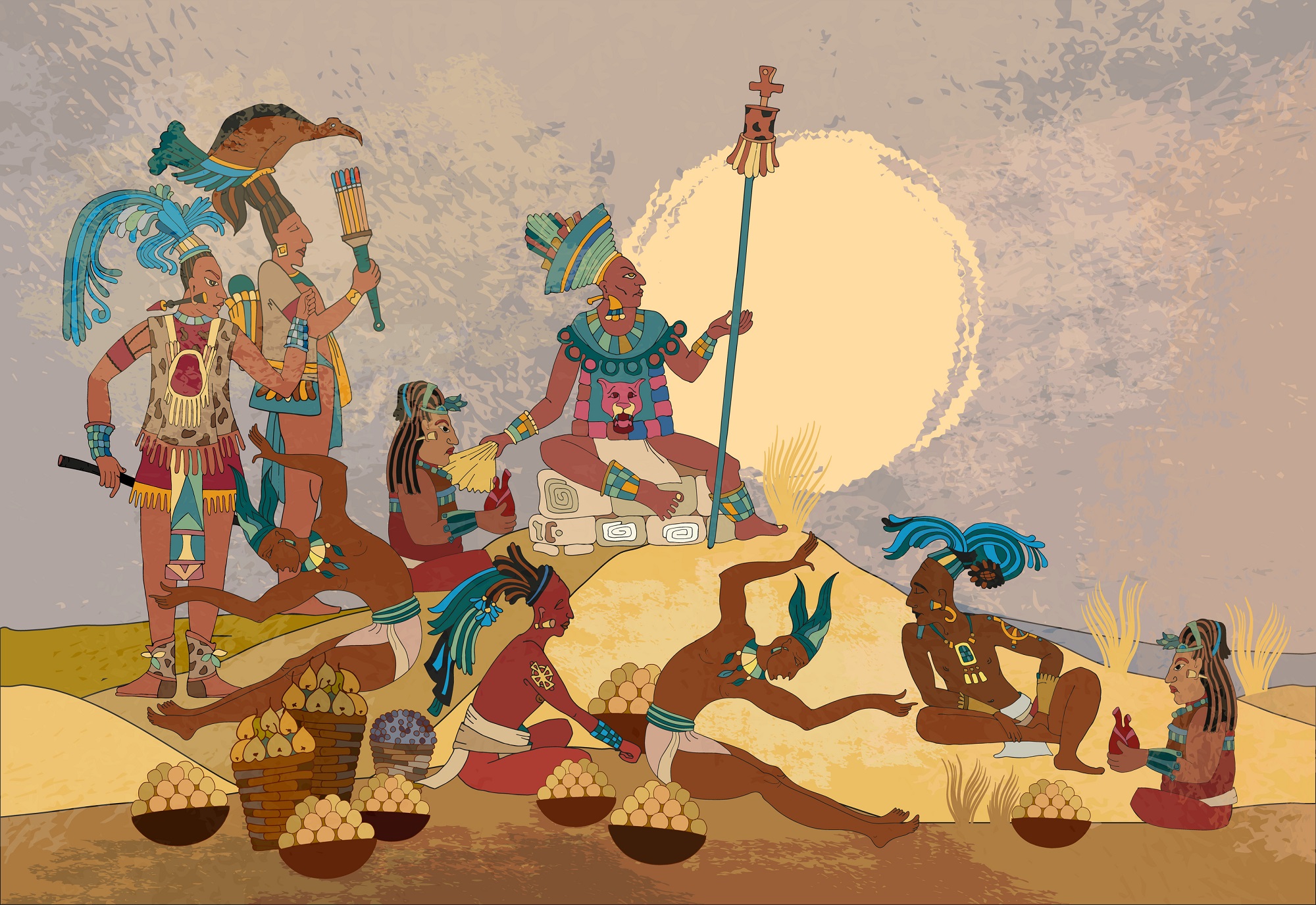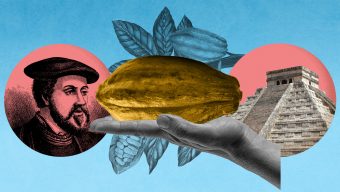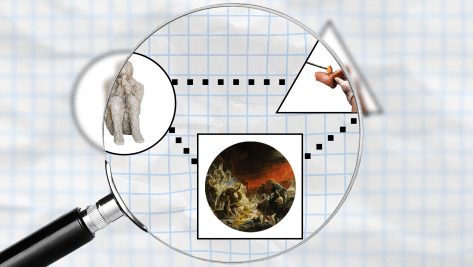Spanish engulfment of pre-Columbian America was aided by the discontent of natives after centuries of uncompromising rule by the region’s dominant tribes. Upon their arrival to the region, the Europeans engaged in already-active civil wars or stirred up the simmering embers of discontent brought about by communities imposing themselves on others. To suggest a clash between Western values and conjectural indigenous purity 500 years after the arrival of Columbus is ideological fraud.
In the case of the Andean empire, less than 50,000 Incas ruthlessly subjugated a population of more than ten million. The Inca emperors would have gladly uttered Louis XIV’s famous phrase: I am the state. They might have also chosen to point out (as so many contemporary politicians do), what in fact Hitler had in mind: it does not matter that others have or are something, because since they are all mine, I am their ultimate owner. In the Inca Empire, over two million men paid a quarter of their year’s work in direct taxation, either by good grace or by force. Another 30% of income was suctioned through other forms of taxation – similar to the alcabala, the sales tax that went up to 14% imposed by the Spanish crown beginning in the mid-1300s. When the Spaniards arrived, the Empire collapsed like a house of cards, because its foundations were already crumbling.
The Mayan civilization did not create the political centralization that could have brought about an alignment similar to that of the Incas in the Andes or of the Aztecs in Mesoamerica. Their city-states were designed as a network of urban centers linked by hierarchical relationships of alliances and domination. Like Greece, cultural unity did not imply politics, but instead meant rivalry between hegemonic centers such as Tikal, Palenque (compared to Pompeii), and Copan, with each one forcng their satellites to obey them.
Many Mayan leaders might have embraced the statements made by Stalin that I reflected on in my previous book. When informed that the peasants did not pay blind allegiance to the atrocities of the Kremlin, the brutal Georgian (Putin would appreciate the savagery) ordered: if they do not understand, explain it to them; if they do not know, teach them; if they do not accept it, shoot them. In the Andes and Mesoamerica, sacrifices to the gods were the forerunners to the firing squad. Mayan social organization was based on a hierarchical society, with a noble elite that established dynastic and clientelistic networks. The society was militarized, and its art, as well as its mosaics, writings, and religion were used as an ideological tool and speak to the legitimization of power.
Over the course of the 7th, 8th, and early 9th centuries, Mayan construction intensified. At the beginning of the 10th century, construction came to an abrupt halt. The cities that housed the pyramids, temples, and palaces covered with carved stone ground to a halt. Some have pointed to asthenia, resistance, opposition, or rebellion against the ruling elite who forced them to undertake oppressive tasks as the reason why. The colossal cities were abandoned. The Mayan civilization had lasted at least three millennia.
The conquest of Mexico by a select number of Spaniards, as I see it, was feasible because of the civil wars during the Aztec dominion. The conquest was successful because of the rebels rising up against the Aztec inflictions, a defiant act from the natives which – like all heroic deeds – had its fair share of bad points in addition to the good.
Pride fosters ineptitude in a project.
Despite the power and riches which came with the conquests, the main objective of the Spaniards was evangelization. A good demonstration of this is how, when the printing press was introduced into the Americas, the first publications were of a spiritual nature. Initial missionary work was entrusted to the regular clergy: Mercedarians (1493), Hieronymites (1498), Franciscans (1524), Dominicans (1526), Carmelites (1527), Augustinians (1533), while later, the Jesuits (1549), the Discalced Carmelites (1585) and the Augustinian Recollects (1604) participated in the process. To get an idea of the extent of the movement: in 1559 the Franciscans had 80 religious houses in America with almost 400 members. Before the end of the 16th century, there were 166 convents. Over the course of three centuries, between 15,000 and 20,000 missionaries arrived in America, mainly from Spain.
In 1618, during the celebration of their 400th anniversary, the Mercedarians explained that their effectiveness was endorsed by the “miraculous” origin of their foundation. They believed this was thanks to the Virgin Mary and also to the heroic nature of their fourth vow, which required them to give themselves as hostages to the Saracens to rescue captives at risk of apostasy. They were Christian warriors who became a religious order in the 14th century and were on the verge of being dissolved like the Templars under Clement V, but their redemptive role saved them from being broken up.
The first book printed in the Americas was The Ladder of Divine Ascent by Saint John Climacus in 1535. The same printing press produced Friar Toribio’s Doctrine and Friar Juan Rivas’ Catecismo mexicano (Mexican Catechism), both in 1537. On the other side of the world, in the Philippines, the first printing press was set up in Binondo, near Manila, in 1593. In that year, the document entitled Doctrina Christiana was published in Spanish and Tagalog. The first printer on the islands was the Chinese Christian Juan de Vera, who printed catechetical works in the local languages.
And now, here are a few brief teachings from these times, applicable to our modern day:
- The attempt to behave appropriately goes hand in hand with proper communication.
- Ethical inquiry into decisions dignifies people, but it also provides ammunition to troublemakers who attempt to knock other people’s success.
- To do good, one must have a pre-existing intellectual respect of ethics.
- The objective of any company must be twofold: economic efficiency (achieving results) and social efficiency (an honorable life for all its stakeholders.)
- Without empathy or in-depth understanding, one returns to simple-mindedness.
- Pride fosters ineptitude in a project, when it does not ruin it completely.
- When people fight to improve the world, others might envy them and try to harm their reputation.
- No project turns out exactly as intended, no matter how perfectly planned.
- Aside from specific exceptions (Hitler, Lenin, Mussolini, Stalin, Mao, Castro, Chavez, Putin, Maduro), there are no good or bad people. Rather, there are people who usually behave well and others who tend to do evil.
- Leadership has much to do with the gift of the gab and little to do with getting the better of others. The Aztecs, who called their top leaders tlatoani (one who speaks), understood this well.
© IE Insights.











